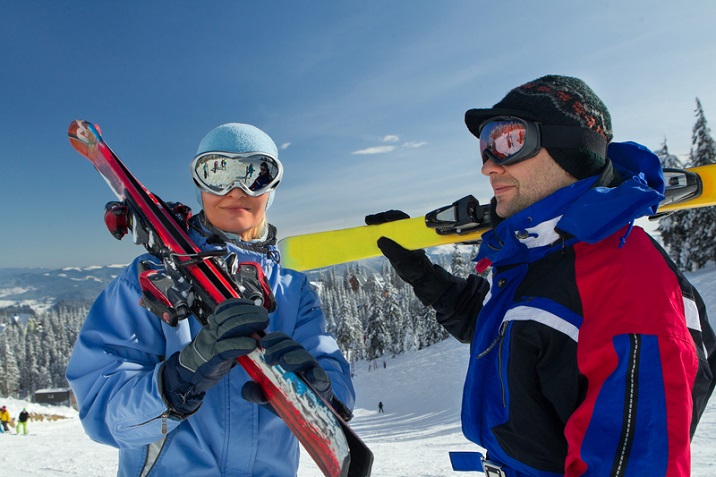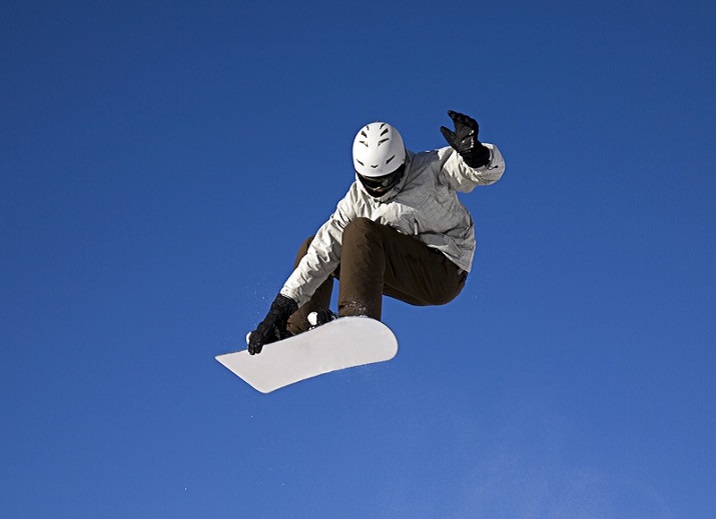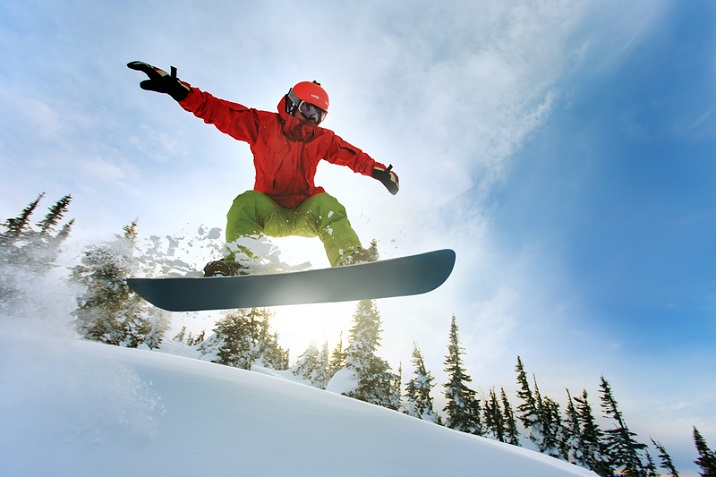
Ski Jumping - Quick Guide
Ski Jumping - overview
Ski Jumping, is a winter sport where an athlete jumps from a specially constructed takes off ramp from its end. This sport demands high power and is expected to fly down the steeply sloped hill. This form of skiing is similar to Nordic skiing, but without Poles.
There are three official disciplines of this sport and they are −
- Speed (Constant in-run)
- Balance, with perfect take-off.
- Flight, maintaining till landing.
There are all around 25-30 competitions organised throughout the year. An athlete have to make a proper run-in while maintaining his balance during a take-off, which will make his flight higher till the landing.
A Brief History of Ski Jumping
To find the origins of ski jumping, we have to go back directly to November 1809, where Danish-Norwegian lieutenant Olaf Rye launched himself 9.5 metres into the air as a show of courage to his fellow comrades at Eidsberg church in Eidsberg. In 1863, the first female competitor participated in Trysil competition.
Sondre Norheim of Norway jumped 30 meters without the poles. The first popularly known ski jumping competition was Husebyrennene, held at Oslo in 1879 in which Olaf Haugann of Norway set a world record of longest ski jump of 20 meters. Since 1892, the annual event was moved to Holmenkollen, which remained as the grandest among the ski jumping venues. In 1964, the Large Hill competition was included in the Olympic programme in Innsbruck.
Playing Environment
The playing environment of this sport demands man-made tracks on icy hills in Winter and artificial plastics in Summer. It will be steep on two levels. Keeping in mind the adverse effects of flight, adequate measures are also taken to ensure the safety of competitors.
Participating Countries
Love of ski jumping has been seen in many nations for past many years. The sport is all about challenging yourself every time for difficult situations and so people get attracted to be a part of this sport. The fever of this sport has spread over many Asian and NonAsian countries. Some major participating countries are Norway, Sweden, Finland, Poland, Austria, England, Slovenia, Germany, Denmark, and Switzerland.
Ski Jumping - Equipment
As Ski Jumping is a typical winter sport, therefore it is necessary that all the equipment used for this sport should be compliant with FIS standards and should be intact and comfortable to enhance the performance of the skier. In this chapter, we will discuss about some important equipment that one will need during his/her journey.
Jumping Skis
Jumping Skis are heavy in size and are especially designed for this skiing discipline. These skis are about 252 cm long and geared up with free-heel bindings.
Ski Boots
Ski Boots are manufactured for a sole purpose of ski Jumping. A ski jumper must have ski boots which allows him/her to lean forward during a flight. These are flexible but firm in structure, high-backed, and also have a low cut to the front.
Ski Bindings
Ski bindings should be bound in such a manner that more of the ski length is used as the front portion. They should be fast paced parallel to the running-direction. To prevent the skis from trembling during a flight, a part of the ski bindings should be used like a connection cord.
Ski Suit
Ski jumpers require a sleek, streamlined, stretchable ski jumping suits. The entire ski jumping suit must be manufactured with the same material. Comfort and fitting are the two important factors in ski jumping suits. It must make you comfortable.
Ski Helmet
Do not forget to wear a helmet as head injuries are one of the most common injuries in skiing. Wearing a helmet can reduce your chances of getting head injuries.
Ski Jumping - How to Play?
Ski Jumping Basics
To perform ski jumping, you will have to ski off a lip or make a jump fast enough for a take-off. There are various techniques to make a jump higher enough to be in the air for more time.

Jumping on skis is quite different to jumping normally as with ski boots and skis, you are unable to move your ankles or your lower legs. Most of this jumping has to come from the upper legs and body. To generate power, put your knees and hips into use. There are two different techniques that can be used to get more air when jumping.
Springing − Springing is like usual jumping but mostly using the upper legs and body to spring.
Ollie − In this technique, an athlete tries to spread the skis to jump even higher.
Both techniques are very effective and will help you give a great flight but each of them have their strengths and weaknesses.
A flight can only be strong, if you give yourself as much upward thrust as possible at the time of take-off. It is performed by throwing your body weight upslope, at the right time. You also want your centre of gravitational force to be powerful and high. As we make the jump, this will enable us to get higher into the air.
Ski Jumping Problems
Skis and ski boots are obviously heavy and lifting their extra weight into the air is relatively difficult since you are unable to use your ankles or lower legs.
Springing doesn't really have any particular tactical solution to solve this problem.
Ollie helps you raise the skis off the snow before you take-off and by spreading your skis, you can throw yourself into the air. This makes the athlete lift their weight higher into the air so your flight is maintained in a higher altitude.
Ski Jumping Timing
Timing is another very important part of jumping. In order to increase our air time, we usually want to leave the snow just as we hit the lip of the jump so that we can finish pushing on the snow and throwing our weight upslope just as we reach the verge of the jump. As simple as this might sound, it does take a lot of practice to get the timing right, especially with the ollie. If we jump too early, we will not get a proper height and distance as we want. If we jump too late we will miss the jump with less upward thrust than we could have had which will again result in less air time.
Ski Jumping Springing
In springing, you have to press your body downwards and jump up to create the momentum to take you into the air. For springing, you should jump by gradually bending our hips and knees to bring your body weight as low as possible. As you come to the edge of the jump, you create the upslope momentum by extending your body up and timing it to reach the most vertical position as much as you can when the middle of the skis reach the edge of the jump. This makes us take-off at the right time to get the most of the air. Then tuck your body up in the air providing a good balance, which also brings our skis higher into the air.
There is no forward or backward movement with springing as our body weight is always kept firm and constant over the middle of the skis. Balancing becomes easier and there is no rotating momentum while jumping and you will be more stable in the air.
Sky Jumping Ollie
In this technique, you have to lift the front part of the ski by bending backwards and then jump take yourself into the air by springing off the back of the skis. The important thing to consider is timing as there are so many movements involved. In order to perform this technique, you have to lean forward slightly and then throw your weight back. This results in bending of skis and the front part of the skis come into the air. By keeping the tip of the skis in the air, you have to lean forward to bring weight over to the point where you want to jump.

Then you make a jump up side in the forward direction after your weight comes in right position. Then extend your body to reach the fully extended position when back part of the skis reach the edge of the jump. After that launch yourself into the air by using the stretch of the back of the skis. When you perform Ollie, extra velocity during take-off might not be straight, but its direction comes from your central gravitational force which ends up by preventing you from any rotations.
After jumping you have to lean forward and tuck your leg to decrease wind resistance that may hamper balancing. Tucking the body will also help in landing as you can put yourself in right position through your limbs.
Ski Jumping Landing
During the process of landing, your body have to absorb the force of landing and for this you have to extend your body. Then bend you knees and hips to land. While coming down, touch the back part of the ski first to drag yourself in the required direction.
Ski Jumping - Scoring and Rules
FIS is the governing body for creating and implementing rules of ski jumping and all other individual bodies who organise ski jumping competitions have to follow the same.
Some of the rules for this sport are as follows −
The underweight players are penalized as their ski length is shorter. This reduces the aerodynamic lift which can be achieved by them.
Distance, style, inrun length and wind conditions are taken into consideration while deciding a winner.
The skier has to aim the calculation point which is the target on each hill.
The calculation point is also the landing area marked by K line. The K line is 90 meters for K-90 competitions and 120 meters for K-120 competitions.
If a skier lands on the K line then he receives 60 points.
If the skier lands beyond the K line he gets extra point while falling short can lead to deduction in points for every meter.
Five judges are near to the expected landing point who award 20 points based on different criteria like balance, body position, landing and keeping the skis steady during flight.
The scores of jumps in two competitions are combined to declare the winner in individual events.

Ski Jumping - Tips to Excel
To become an excellent ski-jumper, you will have to go on practicing as much as possible but this process will provide you slow but fruitful result.
Practise springing and the Ollie by making smaller jumps unless you are capable and confident enough for trying something larger jumps.
Always make sure to feel your shins which should be pushing against your ski boots as you take off from surface during springing.
Follow a strategy by watching the performance of your competitors so that you can assess how fast you need to perform and what changes you might need to make.
Setting Goal
It's important that the goal must be precise and you should not only focus on those areas where you want the improvement but also to cross-check if it is measurable and doable.
Analyzing
Analysis on the strength and weakness will be done simultaneously. Find your weak points and have a brief talk with your coach so as to erase or develop it soon. For example, if you want to compete in Olympic or world cup level, then you should be more serious about your timing, control in air, and landings etc.
Planning
It is a sport which requires a core leg power, hence one should do core exercises such as sprinting, skiing, and various core strength exercises to increase the back strength etc. Stretch your lower and upper part of your body thrice in a week to make your body more elastic.
Ski Jumping - Champions
International Ski Federation (ISF) is the governing body of ski jumping that organises international championships and tournaments all over the world. Apart from this, every country has their individual governing bodies that work under the guidance of (ISF) to ensure fair play in their countries.
Let us now take a look at the career highlights of some of the players who have created records and became champions of Ski Jumping.
Primoz Peterka
Primoz Peterka is a Slovenian former ski jumper. He won fifteen World Cup events, two consecutive World Cup titles, one ski flying World Cup title and a Four Hills Tournament. He is regarded as one of Slovenia's most successful sportsmen.
He is currently working as an assistant coach in the Slovenian women's ski jumping team. He debuted in World Cup in 1996 and got eighth rank in Four Hills Tournament.
In 1996-97 season, he won the World Cup in individual events along with Four Hills Competition. He participated in 2002 Olympics and won a bronze medal.
Matti Nyknen
Matti Nyknen is a Ski Jumper from Finland who has won five medals in Olympics which include four golds and one silver. He won nine medals in World Championships which include five golds, silver, and three bronzes.
He has also won 22 medals in Finnish Championships which include 13 golds. Besides these, he participated in FIS Ski Flying World Championships and won five medals in individual events which include one gold, one silver, and three bronzes.
Martin Schmidt
Martin Schmidt is a German ski jumper born on 29th January 1978. He had excellent track record in Olympic Games, World championships. In Olympic Games, he had won two silver medals and one gold medal.
In FIS Nordic World Ski Championship, he bagged three silver medals, three bronze medals and four gold medals.
His personal best record until now is 224 m. He started his career when he was a schoolboy and won a bronze medal in 1997 FIS Nordic Ski Championships.
Roar Ljokelsoy
Roar Ljokelsoy is a ski jumper from Norway. He was born on 31st May 1978. He has excellent track record in Olympic Games and FIS Nordic World Ski Championships.
In Olympic Games, he had won two bronze medals. In FIS Nordic World Ski Championships he bagged two silver and two bronze medals.
In FIS Ski Flying World Championship he won four gold medals. His personal best record until now is 230.5 m. He retired in 2010 after participating in Ski Flying World Championships.
Sarah Hendrickson
Sarah Hendrickson is a competitor from US and was born on 1st August 1994. She made her World Cup debut in the year 2012 and till now she has made got 25 individual podiums and won 13 times.
Her medal chart shows one medal of gold that she had bagged till now in FIS Nordic World ski Championship.
Her individual best performance was achieving 148 m in skiing. Due to injury in her knee, she was unable to participate further.
Jacqueline Seifriedsberger
Jacqueline Seifriedsberger is a competitor from Austria and was born on 20th January 1991. She made her world cup debut in the year 2012 and till now she has got 12 individual podiums.
Her medal chart shows one medal each of bronze and silver that she had bagged till now in FIS Nordic World Ski Championship.
She has also won a gold medal in FIS Junior World Championships in 2008. Her individual best performance was achieving 135 m in skiing.
Coline Mattel
Coline Mattel is a competitor from France and was born on 3rd November 1995. At the starting of her career she attained 18th position in Junior World Championships and fifth position in World Championship. She made her world cup debut in the year 2012 and till now she has won nine individual podiums.
Her medal chart shows one bronze medal each from 2014s Olympic Games and 2011s FIS Nordic World ski Championship. In 2010-2011 she bagged first position in Ladies Continental Cup.